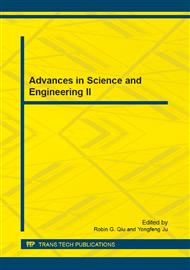p.886
p.893
p.901
p.907
p.913
p.918
p.924
p.930
p.938
Space-Time Coding Technique Based on Four-Antenna Transceiver System
Abstract:
Space-time block code, as one of the space-time codes, greatly improves the performance in the cooperative wireless communication systems by the use of space and time diversity. However, traditional STBC can’t enhance the overall transmission rate and there is no form of complex codes with the rate of 1 when the number of antenna is more than 2. In order to design codes with full-rate, we refer to quasi-orthogonal STBC whose generator matrix is orthogonal between its subspaces. In this paper, based on the combination of QO-STBC and Self-adaptation technology, we propose a new plan of space-time coding which dismisses the interference among symbols when decoding and advances the coding capabilities in the context of full-rate transmission, finally we justify the new plan through lots of computational simulations.
Info:
Periodical:
Pages:
913-917
Citation:
Online since:
October 2011
Authors:
Keywords:
Price:
Сopyright:
© 2012 Trans Tech Publications Ltd. All Rights Reserved
Share:
Citation:


